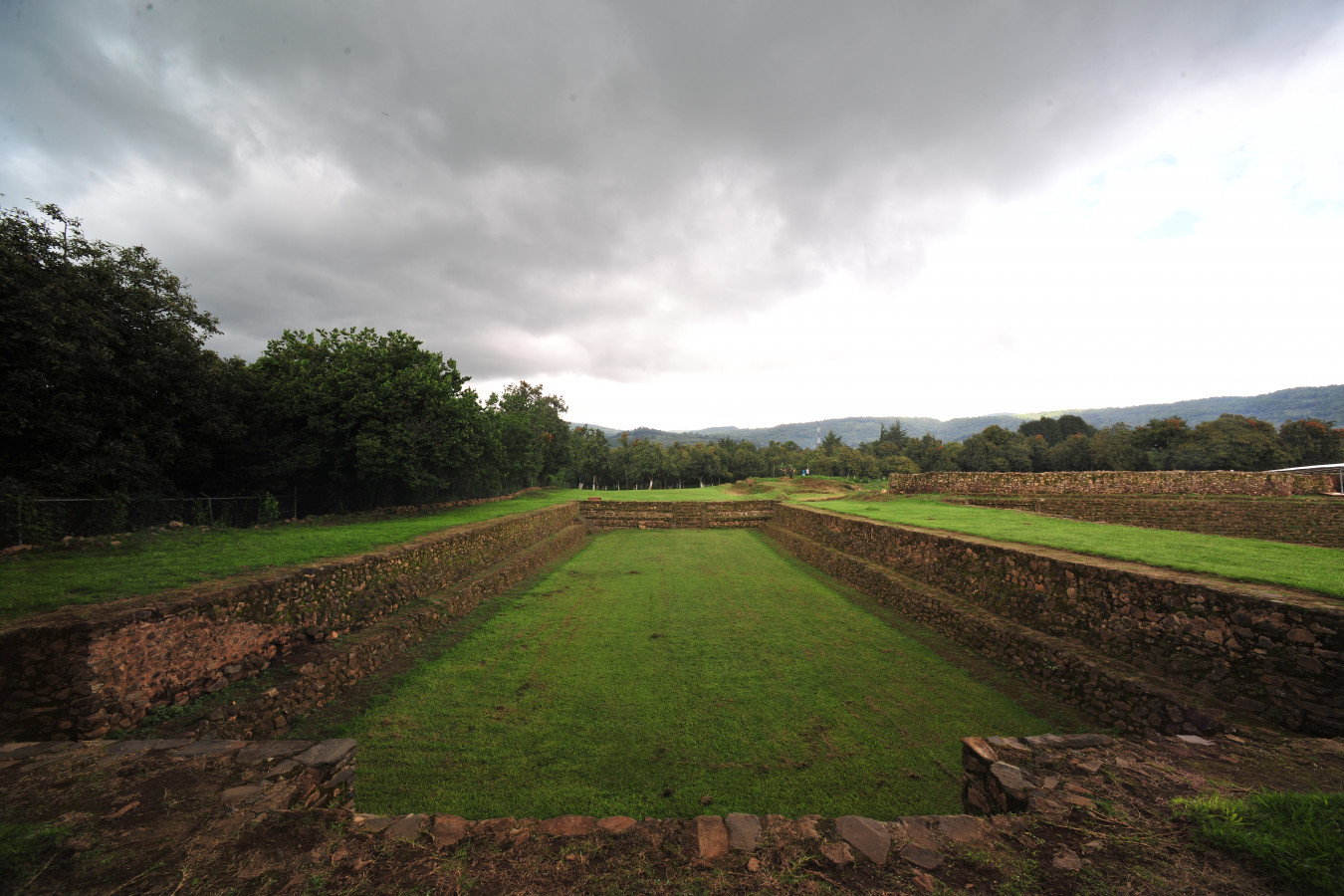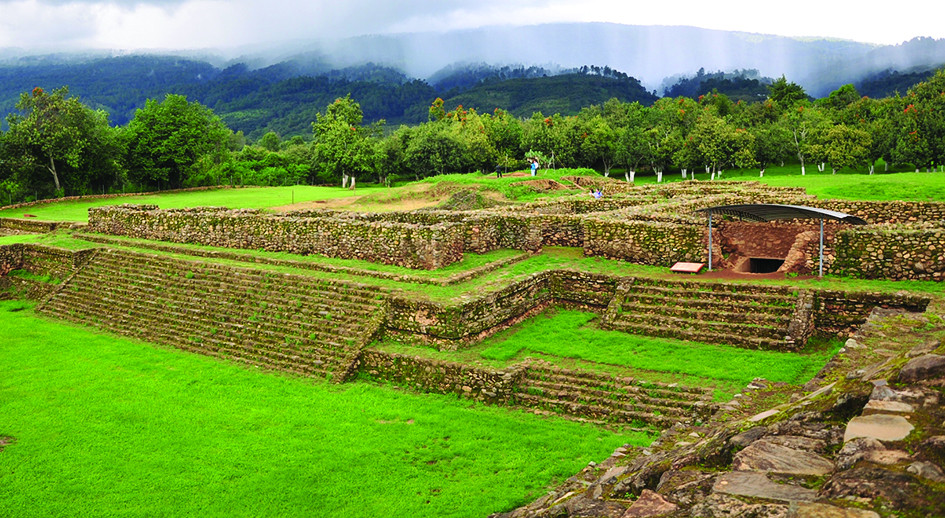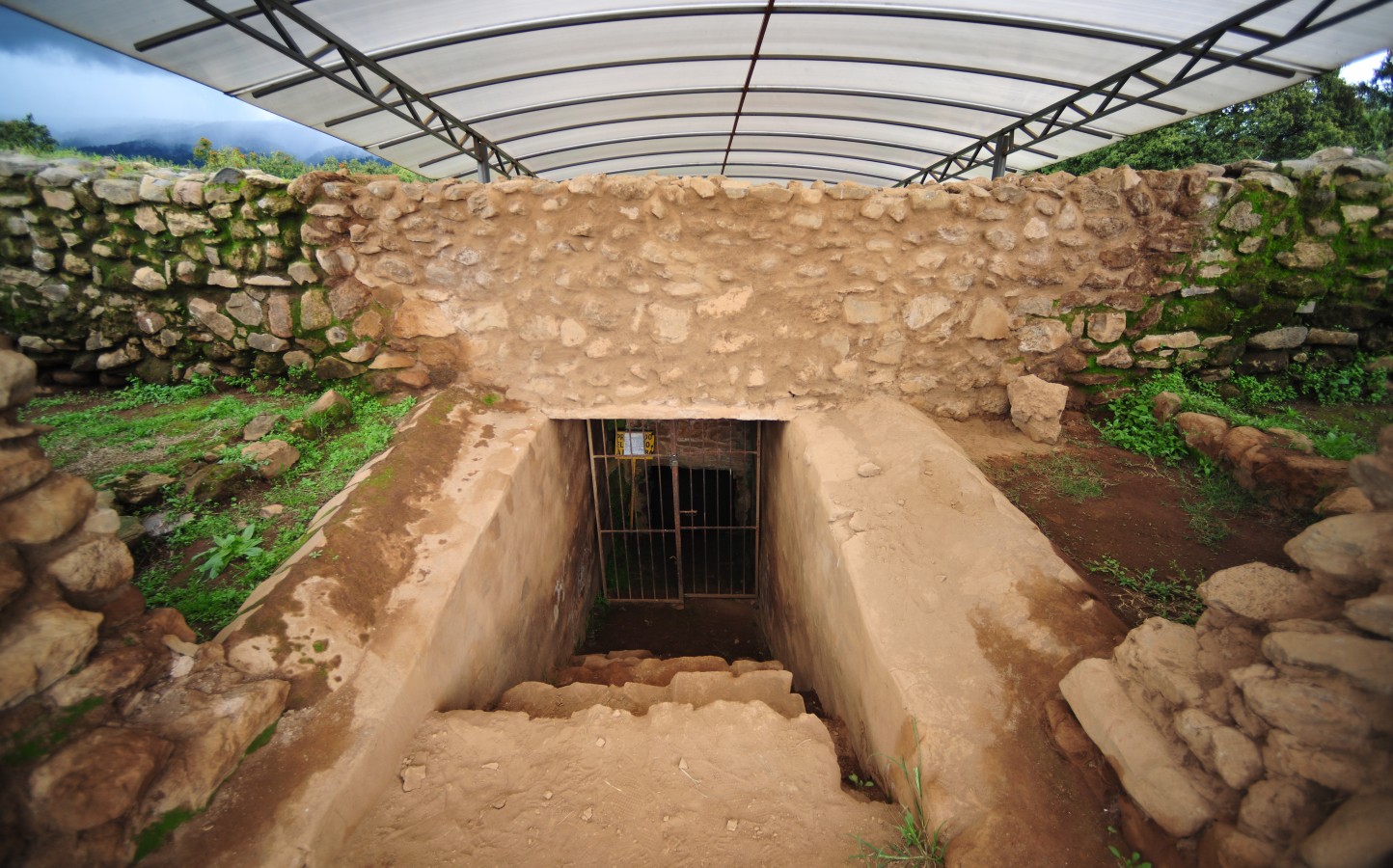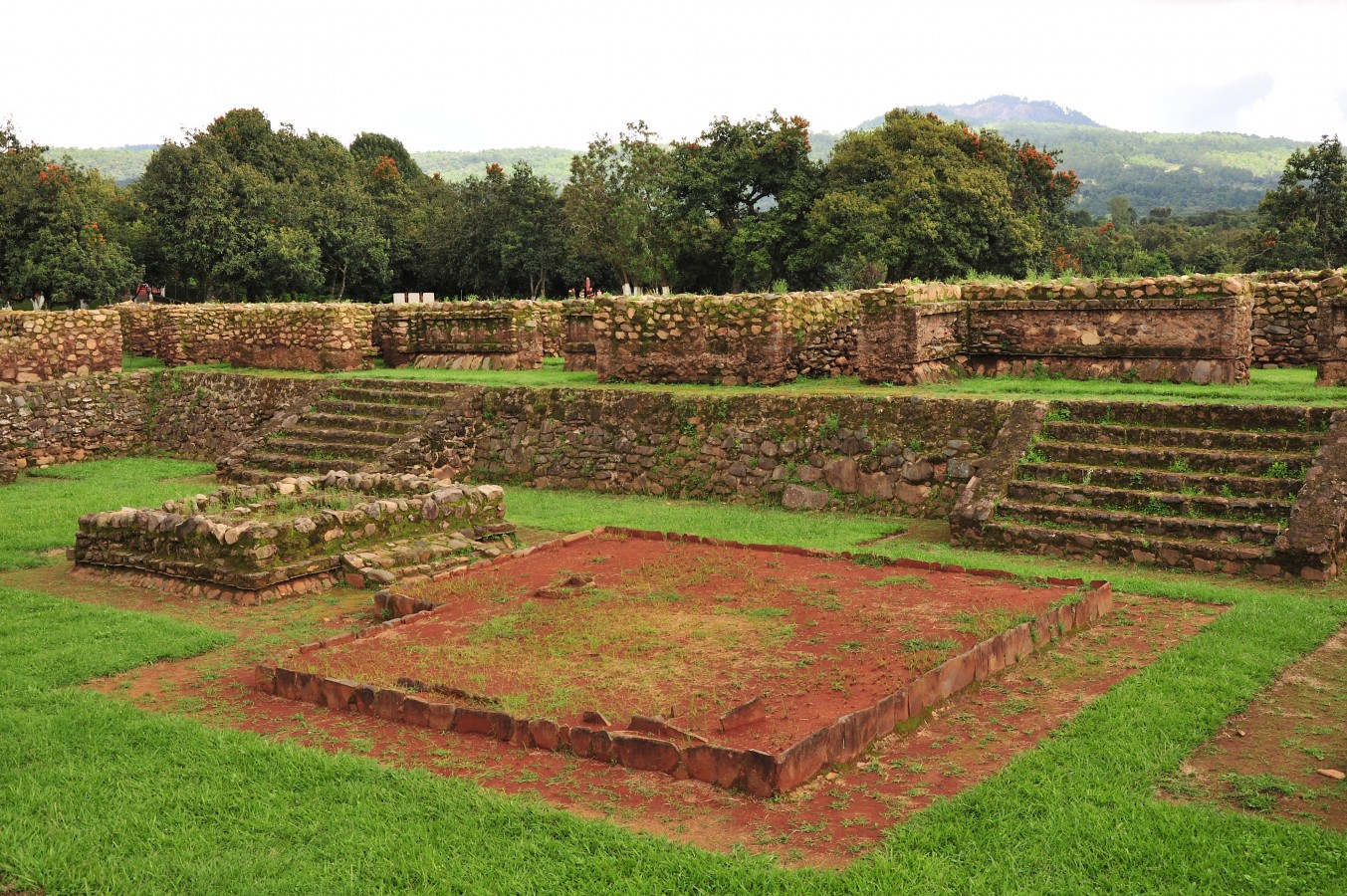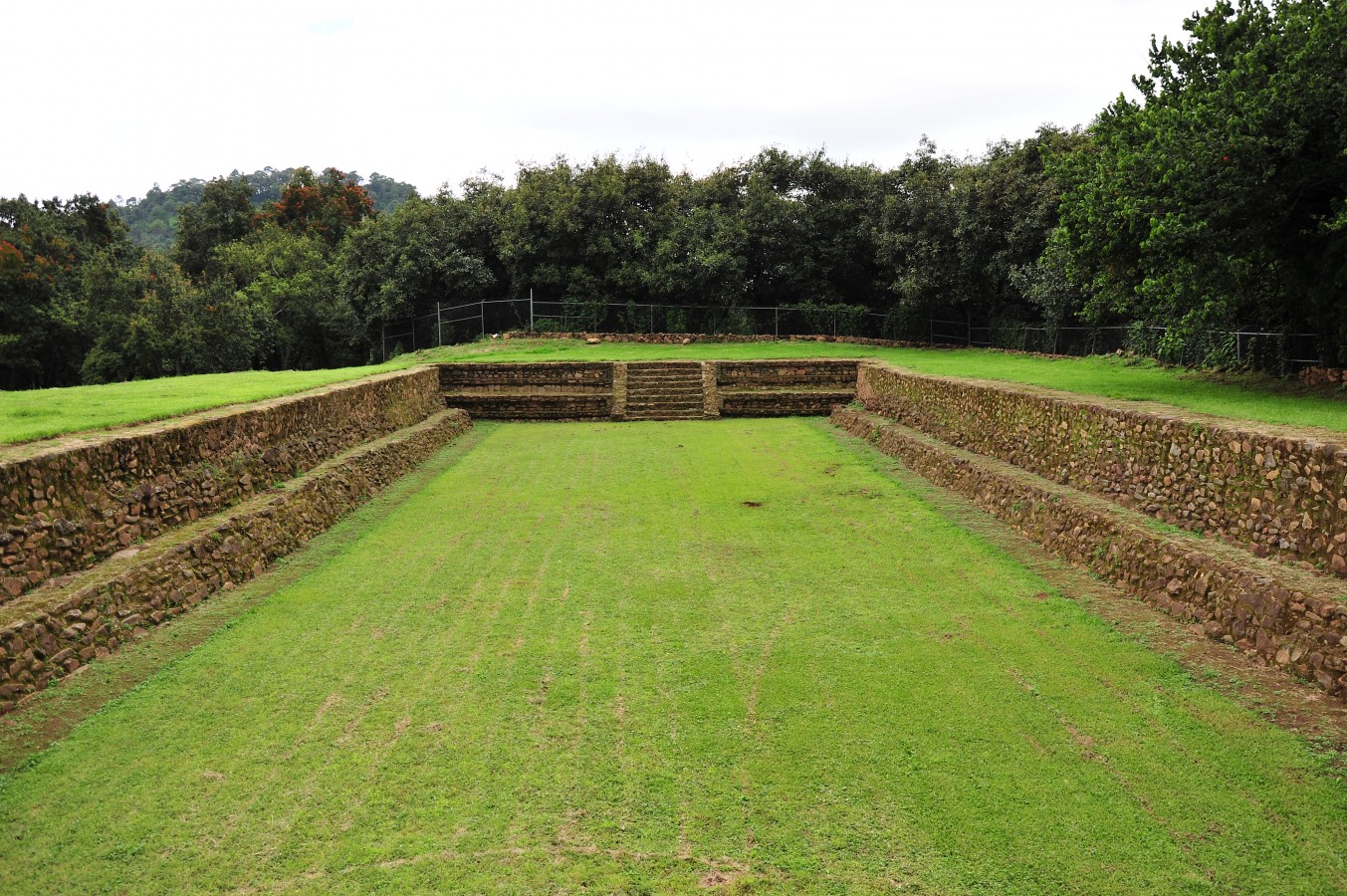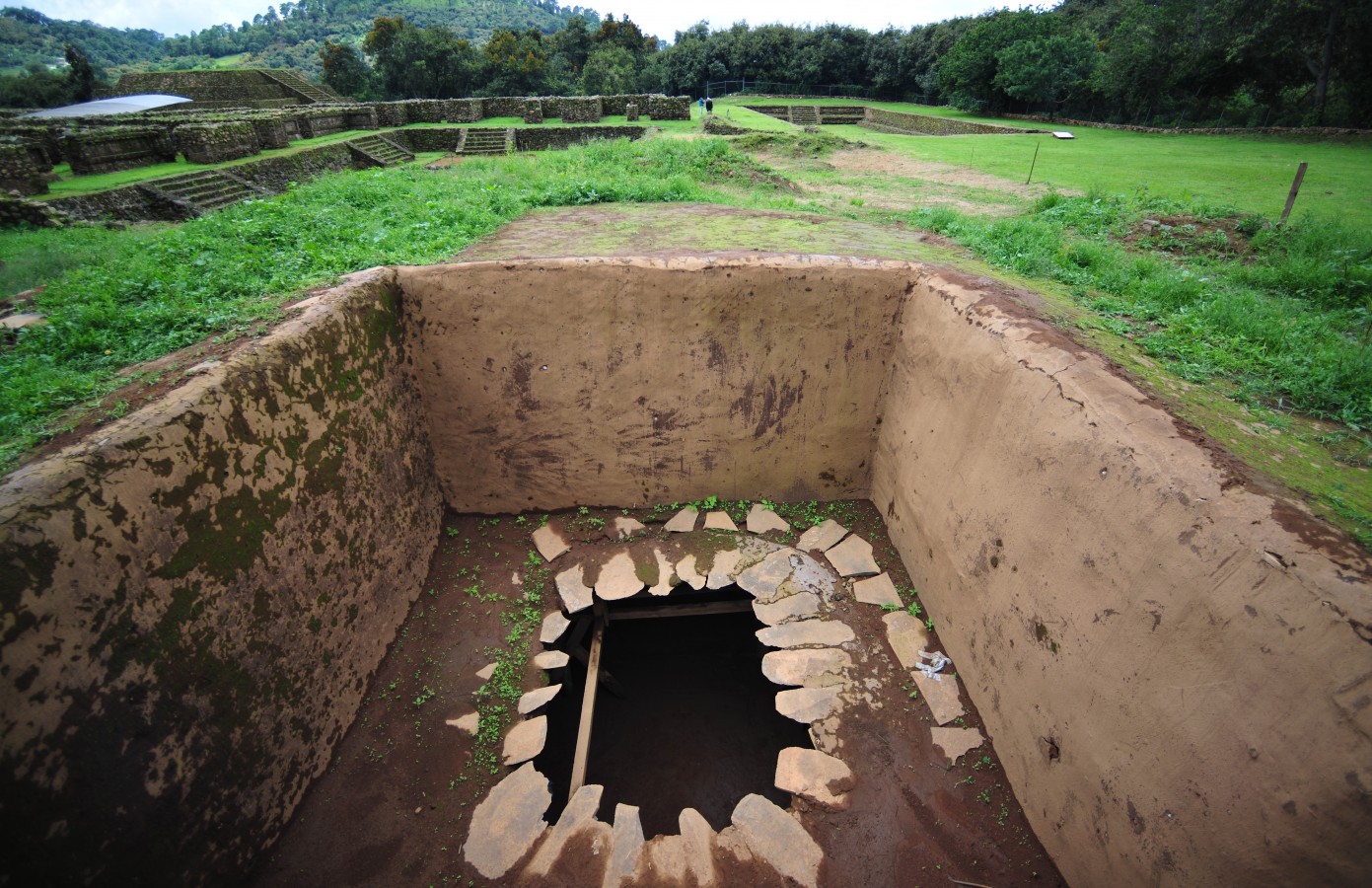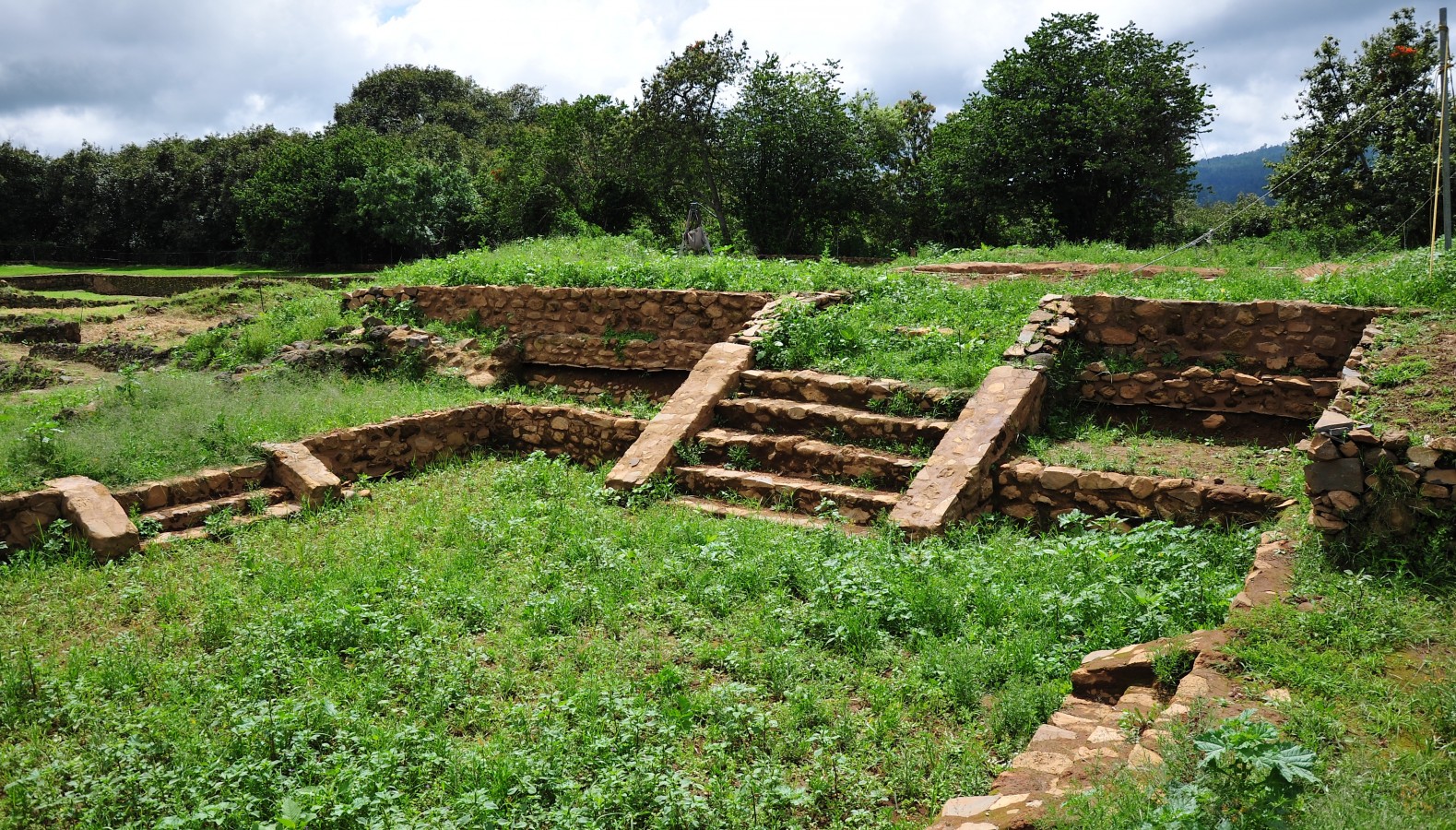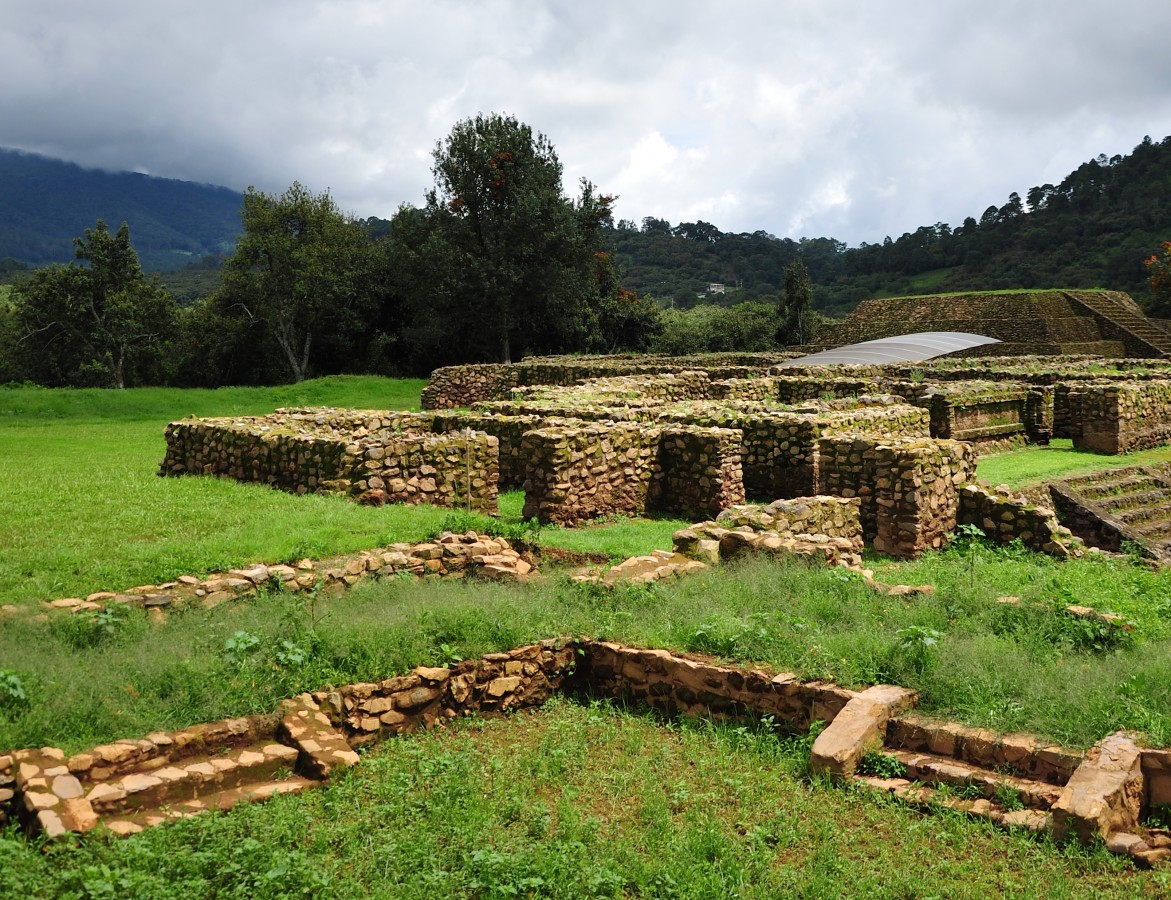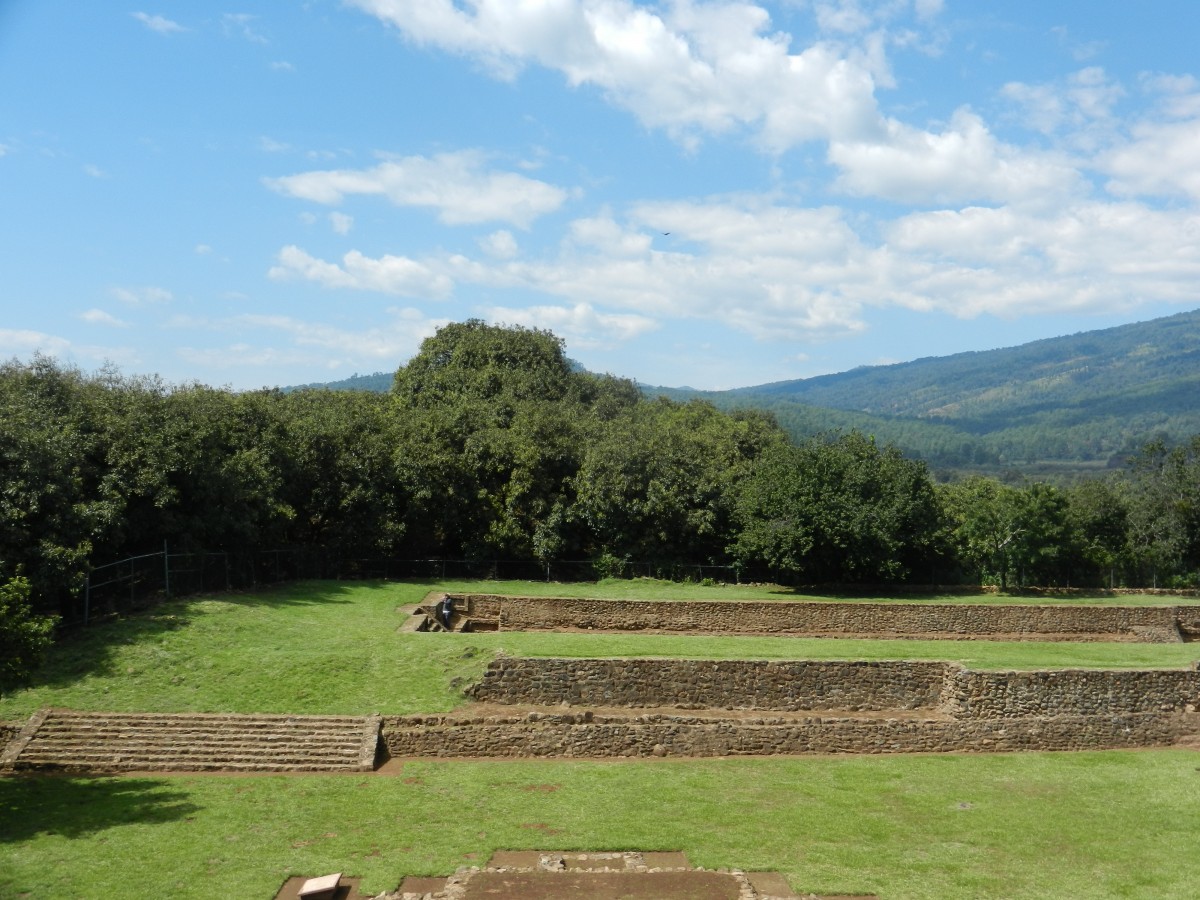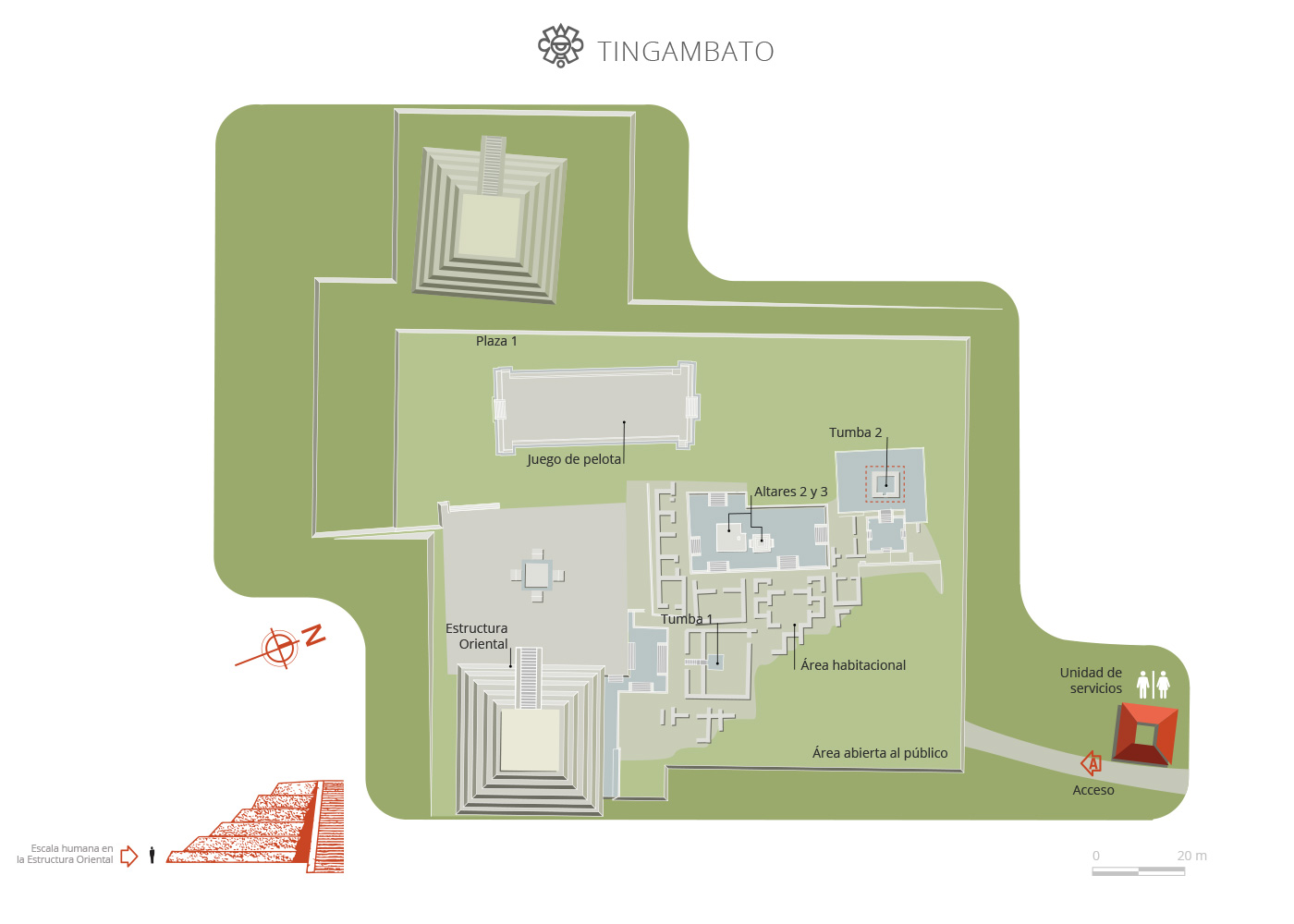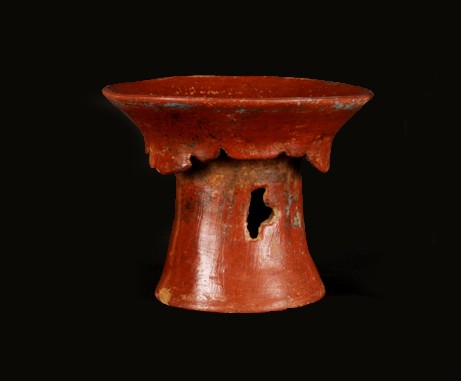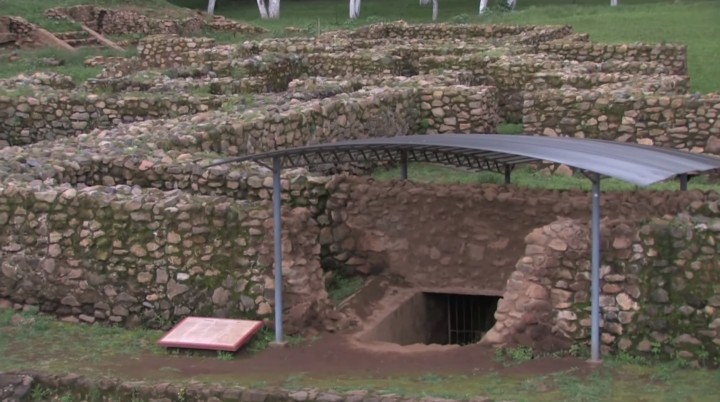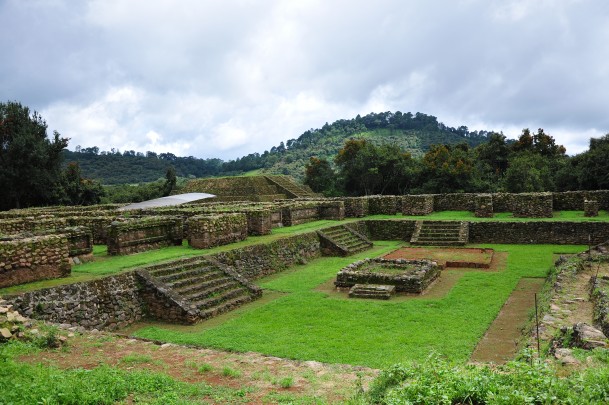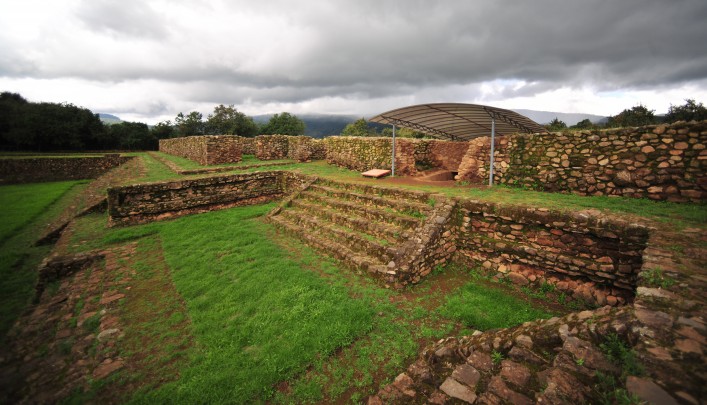Tingambato
Place where the fire ends
Settlement prior to the peak of the Tarasco domain, much influenced by Teotihuacan. Large platforms, ball court, numerous chambers and tombs with rich offerings portray the life of this town. Located between Pátzcuaro and Uruapan, there is still much to be discovered.
About the site
This important site is also known as Tinganio, which means “place where the fire begins” in Purépecha. It is one of the representative sites of the period prior to the height of Tarascan dominion, having some features clearly from Teotihuacan mixed with other local traditions.
There are few references to this area. Only one mention has been found in a Michoacán newspaper on the finding of a tomb in 1842. Archeologists Román Piña Chan and Kuniaki Ohi performed most of the archeological excavations and restorations that can be visited today from 1978 to 1979. Only a small part of the site, corresponding to the settlement’s religious and residential area, has been explored to date.
Investigations performed at Tingambato have allowed us to discover a little-known period in Michoacán’s history. This was a period of great change throughout Mesoamerica after the fall of Teotihuacan, prior to the large settlements founded by the Tarascans or Purépecha towards the end of the pre-Hispanic period.
We can clearly define two stages in the zone’s history. The first begins in 450 AD, when establishment of this ceremonial center begins. The settlement was inhabited by groups possessing a productive food economy, essentially based on farming and complemented by hunting and fishing. In this phase, its builders leveled the terrain to form an artificial platform on which they constructed the bases for temples, as well as certain buildings of a civic nature for the ruling class, together with numerous huts for the rest of the population. The second stage was from 600 to 900 AD, in which the influence of Teotihuacan is obvious. To explain the presence of features from the great metropolis, it is necessary to give a brief summary of its culture.
Referring to the culture of Teotihuacan implies a watershed in the Mesoamerican area. This was the period in which the first great metropolis appeared in the region. Teotihuacan was at its height from 100 to 575 AD, and it led the way for artistic, architectural and religious expression. This society was ruled by a theocracy that held a great deal of influence over many Mesoamerican settlements for more than 500 years. It also became the first great multi-ethnic city in Mesoamerica, where we now know there were neighbourhoods for people from different regions, including Michoacán.
After its collapse (in approximately 575 AD), Teotihuacan fell apart. However, it appears that people scattered far and wide from this great city, leading to some of its architectural elements beginning to appear in places a great distance from Teotihuacan. Such is the case for Tingambato. We can confirm Teotihuacan’s influence because rooms are located around sunken plazas, there were altars in the ceremonial center and we observe the characteristic talud-tablero or slope-panel feature (a backwards-sloping wall and a vertical wall) which is one of Teotihuacan’s significant architectural elements. The similarity of Tingambato’s Mesoamerican ballgame court to those of Tula and Xochicalco reinforces the theory that this settlement appeared after the fall of Teotihuacan, as these three sites flourished after the great city’s decline. It is very important to mention Tingambato’s funerary architecture, which harks back to an ancient tradition in Michoacán of burying certain dignitaries in impressive chambered tombs with vaulted ceilings.
Tingambato was definitively abandoned in approximately 900 AD. It displays none of the elements that would relate it to the late phases of Tarascan dominion. We believe that there was a conflagration at the end of Tingambato’s occupation, traces of which have been observed in archeological excavations.
There are few references to this area. Only one mention has been found in a Michoacán newspaper on the finding of a tomb in 1842. Archeologists Román Piña Chan and Kuniaki Ohi performed most of the archeological excavations and restorations that can be visited today from 1978 to 1979. Only a small part of the site, corresponding to the settlement’s religious and residential area, has been explored to date.
Investigations performed at Tingambato have allowed us to discover a little-known period in Michoacán’s history. This was a period of great change throughout Mesoamerica after the fall of Teotihuacan, prior to the large settlements founded by the Tarascans or Purépecha towards the end of the pre-Hispanic period.
We can clearly define two stages in the zone’s history. The first begins in 450 AD, when establishment of this ceremonial center begins. The settlement was inhabited by groups possessing a productive food economy, essentially based on farming and complemented by hunting and fishing. In this phase, its builders leveled the terrain to form an artificial platform on which they constructed the bases for temples, as well as certain buildings of a civic nature for the ruling class, together with numerous huts for the rest of the population. The second stage was from 600 to 900 AD, in which the influence of Teotihuacan is obvious. To explain the presence of features from the great metropolis, it is necessary to give a brief summary of its culture.
Referring to the culture of Teotihuacan implies a watershed in the Mesoamerican area. This was the period in which the first great metropolis appeared in the region. Teotihuacan was at its height from 100 to 575 AD, and it led the way for artistic, architectural and religious expression. This society was ruled by a theocracy that held a great deal of influence over many Mesoamerican settlements for more than 500 years. It also became the first great multi-ethnic city in Mesoamerica, where we now know there were neighbourhoods for people from different regions, including Michoacán.
After its collapse (in approximately 575 AD), Teotihuacan fell apart. However, it appears that people scattered far and wide from this great city, leading to some of its architectural elements beginning to appear in places a great distance from Teotihuacan. Such is the case for Tingambato. We can confirm Teotihuacan’s influence because rooms are located around sunken plazas, there were altars in the ceremonial center and we observe the characteristic talud-tablero or slope-panel feature (a backwards-sloping wall and a vertical wall) which is one of Teotihuacan’s significant architectural elements. The similarity of Tingambato’s Mesoamerican ballgame court to those of Tula and Xochicalco reinforces the theory that this settlement appeared after the fall of Teotihuacan, as these three sites flourished after the great city’s decline. It is very important to mention Tingambato’s funerary architecture, which harks back to an ancient tradition in Michoacán of burying certain dignitaries in impressive chambered tombs with vaulted ceilings.
Tingambato was definitively abandoned in approximately 900 AD. It displays none of the elements that would relate it to the late phases of Tarascan dominion. We believe that there was a conflagration at the end of Tingambato’s occupation, traces of which have been observed in archeological excavations.
Map
Did you know...
- Three tombs with rich and varied offerings have been found beneath the main platform.
- One of Tingambato’s characteristics is a series of rooms that we can observe on the great platform, many of whose facades were decorated in the so-called talud-tablero (slope-and-panel) style typical of Teotihuacan, although Tingambato has its own variations.
- The most recent excavations of Tingambato in 2015 revealed the great platform, the rooms and the introduction of the Teotihuacan-style talud-tablero system that we now see in the archeological zone, which would have been occupied for barely a century, from 570 to 670 AD. Finally, we can see the traces of a conflagration in the city at that time.
An expert point of view
A longstanding tradition of tomb construction and complex treatment of the dead.
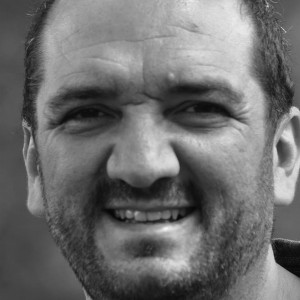
José Luis Punzo Díaz
Centro INAH Michoacán
Practical information
Monday to Sunday from 10:00 to 18:00 hrs.
$75.00 pesos
Se localiza dentro del poblado de Santiago Tingambato.
Services
Directory
Jefe de Zona Arqueológica
José Miguel Cabrera Arcos
This email address is being protected from spambots. You need JavaScript enabled to view it.
+52 (443) 313 2650, ext. 248004


